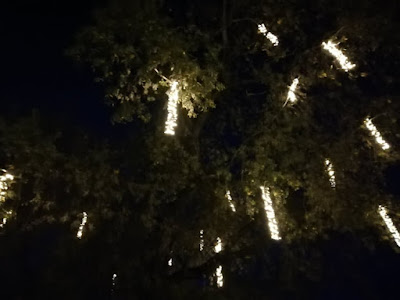Inner developmental goals and sustainable development
This week I helped organize a national conference on sustainable development in teacher education (Universities Norway). Teacher educators shared experience and knowledge about how to integrate UNs sustainable development goals into teacher education. One important subject discussed was the need to use as a starting point the personal responsibility of the students and pupils to make changes towards sustainable development in their everyday life, but at the same time not forget the bigger global picture and the need for fundamental structural change.
There was
also a focus on children and young people as the guides towards a future for the rich and overspending countries where the good life is not connected to increasing wealth. In this perspective
its interesting to see this new international initiative, called the inner
developmental goals, which are connected to UNs sustainable development goals: https://youtu.be/xsB5ci-rgGg Inner Development Goals Important thinkers like Otto Sharmer
and Robert Kegan are contributing to this perspective on sustainable
development, which emphasizes the need for inner transformation, in order to
facilitate the radical change of society and culture which is needed now. They talk about presence, ability to listen, and openness towards the unknown, as especially important in coping with the challenges of climate change and nature destruction.
Something I find interesting is how the need for presence and ability to be in the not knowing, to be able to listen for the emerging possibilities of the future which we don’t know yet, seems like something radically new in a world where education traditionally was about acquiring the knowledge of the past, but at the same time is something really old, from the Greek antiquity. Aristotle says in the Nichomachean Ethics about practical wisdom: “the discernment rests with perception”. In Martha Nussbaum’s interpretation of Aristotle this implies that practical wisdom should be based on a concrete situational judgment of intuitive character. Universal and general values, and rules and knowledge based on the past, are guiding, but the priority should be on the perception of the present moment, which is always new and in principle not known to us. This requires an ability to include both emotional and cognitive knowledge in the perception, and an openness to complexity and ambiguity in order to perceive the situation as adequately as possible. Martha Nussbaum writes: “Being responsibly committed to the world of value before her, the perceiving agent can be counted on to investigate and scrutinize the nature of each item and each situation, to respond to what is there before her with full sensitivity and imaginative vigor, not to fall short of what is there to be seen and felt because of evasiveness, scientific abstractness, or a love of simplification.” (Love’s knowledge p. 84).




Comments
Post a Comment